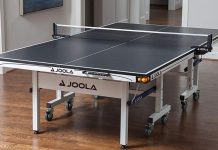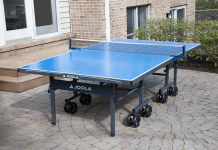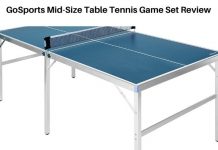After the numerous tournaments of Stratego went over so well at my Grandma’s house, it was like board game fever caught hold. My Grandma went out to the local Walmart and scooped up some other classic games we didn’t own. Games like Monopoly, Yahtzee and Clue soon filled up the game closet. She even bought some card games.
And even though my Grandma always was a big player of Rummy and War, a new card game called Phase 10 caught her attention. There were many nights that Grandma had her group of friends over to play this twist on the classic Rummy game.
Of course, I was more interested in swiping the crackers and cheese from the party platters. Oftentimes we avoided the kitchen all together because for such a simple card game, it sure could get heated and loud.
A Phase 10 strategy can be very straightforward but there are some curve balls to keep in mind when playing. Staying flexible, knowing how to use the cards, and the best way to discard your hand are all crucial to success in this hit classic.
Table of Contents
General Tips
1. Stay Flexible
Once you’ve placed a card into a set or run, it must stay there and cannot be moved. With this fact in mind, try to plan ahead as much as possible. Think about the cards you already have in your hand, and what cards are more likely to come up next. Don’t be afraid to think about how a run can go one way or the other.
For example, instead of being focused on the fact that you have a three, four, six and you’re waiting on a five. Also consider that you might gain a one, two, three, four run instead.
Think about how the sets can be down or up instead of just focusing on needing one specific card.
2. Observing your Rivals
Keeping an eye on your opponents will give you an edge. Almost everyone gives away subtle clues to what they’re up to. Anyone who seems angry or frustrated might be far behind you, and anyone giddy could be ready to set down their Phases. Try to do what you can to trip them up while you work on your Phases. Throw down a Skip on the person who’s giddy and discard a useless card to keep the other player grumpy.
Related Article: Uno Strategies and Probabilities
Since you must have all the cards needed for both Phases before you can set the cards down, you need to keep everyone at an equal stalemate as much as possible.
3. More Players, More Trouble
The player count can be a double edged sword of sorts. Two to three player games might mean a stagnant discard pile forcing you to draw a new card every turn in the hopes that you draw what you need. But with four or more players, you will lose out on cards you might need due to the fast turnover rate. The higher the number of players, the harder it is to win. The chances are stacked against you.
Also keep this in mind as you’re building your Phases. As people discard more cards, and add to Phases, there are less options to go around. Take a mental note of the cards that have been played and the Phases that are already on the table. You may not be able to get the cards you need if other players have used all of those cards up.
4. Card Values
For the most part, any cards you’re left with are only a small amount of negative points. Ideally you’d empty your hand as much as possible before everyone else finishes their Phases. But since this is not always possible, you’ll have to look over the cards you have left.
According to the official rules:
- Each numbered card from 1-9 scores 5 points each
- Each numbered card from 10-12 scores 10 points each
- Each Skip card scores 15 points each
- Each Wild card scores 25 points each
So as you can see, even if it’s painful to do, you might find yourself discarding a Wild or Skip card if you don’t get the cards you need to make a Phase before everyone else. Of course this is the least likely scenario so don’t sweat it too much.
5. Using Wild Cards
Some players like to hold onto their Wild cards to the last second. Don’t be afraid to use your Wild cards early on. If you’re able to finish your Phase by using a Wild card, holding on to it until the last minute will only slow you down.
Related Article: Yahtzee Strategies to Maximize Your Points
Another great thing about Wild Cards is you can use as many as you have in your hand to complete Phases. As long as you have at least one regular card in the Phase, then you’re good to go. There are only eight Wilds in the deck so chances of that are slim, but still a viable way to win.
6. Using Skip Cards
Similar to the Wild Card, players tend to hold onto this until the last second. Although we don’t recommend throwing it down as quickly as possible, saving it too long won’t net you any favors.
If you see a player who seems to be getting close to finishing their Phase, throw down the Skip. It may not be enough for you to get the card you need, but it will buy you time and trip up the other player. Use it wisely, but don’t be afraid to use it early on.
Discarding Cards
If you fall behind, you’re more likely to lose and rack up negative points. Consider the cards you have left in your hand. Whenever thinking about negative points, you want to make sure you get rid of cards that are worth a high amount of points over lower ranked cards. For example, getting rid of an eleven before you discard a one.
Related Article: Splendor Strategic Gems
If you don’t feel like you’re very close to completing your Phases and it seems as though your opponents are about to finish theirs, prioritize discarding cards that are worth a lot of negative points.
7. Avoid a Negative Score at All Costs!
This will at least buffer your negative point count. Obviously you want the least amount of cards in your hand at any given time. As always, try to finish your Phases first, but if that seems to be an impossibility, discard high ranking cards first.
When discarding cards to the pile, also take a moment to look at your opponent’s Phases that they have completed. You want to make sure that as much as possible, you don’t put down a card that they can add to their Phase.
For example, if they’ve already got a run of two through seven, you wouldn’t want to put down an eight or a one. Which would only increase their score and make it easier for them to finish their discard Phase.
Try instead to discard your other cards first and leave it towards the end in the hopes that maybe you finish your Phase before they’re able to use such a card. Or perhaps you will be able to use it on one of your Phases.
8. Helping the Enemy
As painful as it is, sometimes it’s better to prioritize getting rid of a card that might help your opponents. You should do this whenever you can be finished with your Phase faster than the other players. Giving your opponents some points is better than hanging onto the card and wasting another turn before you’re completely finished.
Related Article: Jenga Tips to Prevent Toppling
For example if you’re a card away from completing your Phases, and you see the last card you need in the discard pile. The other cards in your hand are all towards your Phases except for a couple that you know the next player needs. In this scenario, grab the card you need and discard the one that’s going to help the other player. You’ll finish your Phase first and still come out on top. As always, use your judgment.
Completing Phases
This game is just as much about you finishing your Phases as it is preventing your opponents from being able to finish their Phases. Although you can’t see their whole hand they still might give away certain subtle tells with their facial expressions or the way they take cards.
Before you make any decisions about which card to draw, look at the discard pile. Is the top card useful to the Phases you’re trying to complete?
You’re able to draw from the discard pile, or get a completely new card. Consider what’s going to help you the most. This will be dependent upon the Phase conditions.
If you’ve completed your Phases and you are trying to discard the rest of your cards, consider first the discard pile. If it’s a card you can add to one of the Phases on the board, prioritize picking that over taking a new card that you may not need.
Picking a card that can be added to a run or set will free you up to discard a different card your next turn and you are more likely to finish your Phase faster than the other players.
9. Hitting Players
Not that we advocate violence, but sometimes it can benefit you to hit your opponents…with those cards you can’t easily use. Using the ability to hit on other players will be a valuable tool. Use it as often as possible to keep your hand small.
Once you’ve completed your Phases you are able to discard cards to other player’s Phases. Adding your cards to someone else’s run will help you discard faster. You can add it to your own finished Phases, such as a run of three, four, and five. You need to discard a six, so you can add it to that run.
Related Article: Strategies for the Photosynthesis Board Game
It works the same with sets. If I had three sevens, and I have a fourth seven I need to discard, I can discard it to my original set of three. Or if another player has a set of reds I can discard a red card to their Phase.
10. Finding Runs vs. Sets
When trying to complete a run or a set, prioritize getting the numbers you need to finish a run. It will be much harder to find a sequential set of numbers versus enough cards of the same color.
For example if your Phase requires you to have a run of three in a row, and the other Phase is five of the same color. Make sure you have the run first, and then search for the color you need.
Sometimes you will find that you have almost all the numbers you need for a run, and almost all the cards you need to have a color set. Make sure when discarding a card that you don’t give away the cards you need to finish either one of these Phases.
Do everything you can to finish your Phase before everyone else, but don’t get mentally stuck. If you don’t complete your Phase before everyone else you’ll be forced to try and do that Phase again while the players who made their Phases move on. If this happens too much then you will fall too far behind.
What is the Best Way to Win Phase 10?
The best way to win Phase 10 is to be flexible and observant. Since you have a shared hand of sorts it’s important to look at every possible place that you can discard a card. Not only do you need to think about how you can discard your cards the fastest, but you also need to think about blocking your opponents.
If I place this card down, will my opponents be able to use it to finish a Phase? Although sometimes it is impossible to know what is the best decision every single time, remember to think about every possible angle before committing.
Remember to hold onto cards making a run over cards that make a set. It’s harder to find numbers in sequence than it is to have cards of the same color. If a Wild card completes your Phase, don’t be afraid to use it at any time. Use as many Wilds as you need to get the job done. If you have a Skip, it’s always valuable to use early on to disrupt your rivals.
Keep an eye on the cards left in your hand. If another player seems close to finishing a Phase, make sure your hand isn’t full of high point cards. It’s better to discard a twelve, than suffer the chance of a negative score.
This may be a twist on the classic, but it’s truly come into its own. This simple game may trip you up if you don’t pay attention. And who knows– it might even cause an all out war in the kitchen if you play your cards just right.

Veronica is a Green Bay-based freelance writer and editor with extensive experience with board games. When not busy scribbling her thoughts, you might find her in her garden, hiking out in the woods, or exploring new food joints.
Veronica is a die-hard board game and chess hobbyist by night. She likes to try out new games and is always on the lookout to recruit new players for her game night (so beware!). When not playing board games or throwing darts, she is usually busy painting miniatures (or doing other nerdy stuff).
She is the CEO & Content Writer of Indoor Games Zone. She shares her expertise from years of playing chess, board games, and darts.

![Stiga XTR Pro Review | 1,559+ Global Ratings (In-Depth Guide) [year] Stiga XTR Pro Review](https://indoorgameszone.com/wp-content/uploads/2021/08/Stiga-XTR-Pro-Review-218x150.jpg)







